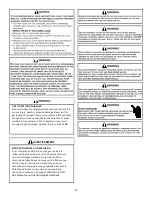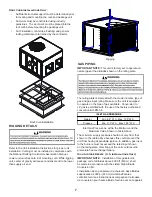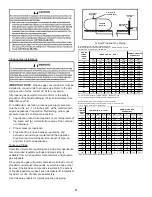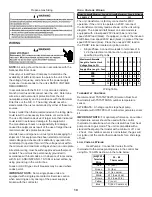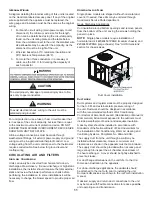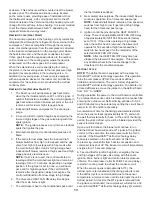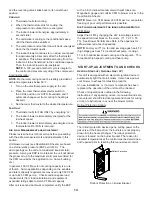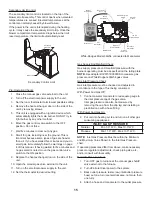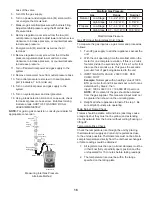
6
All Installations:
• For proper flame pattern within the heat exchanger
and proper condensate drainage, the unit must be
mounted level.
• The flue outlet hood must be at least 12 inches from
any opening through which flue gases could enter
a building, and at least three feet above any forced
air inlet located within ten feet. The economizer/
manual fresh air intake/motorized fresh air intake
and combustion air inlet mounted on the unit are not
affected by this restriction.
• To avoid possible corrosion of the heat exchanger,
do not locate the unit in an area where the outdoor
air (i.e. combustion air for the unit) will be frequently
contaminated by compounds containing chlorine
or fluorine. Common sources of such compounds
include swimming pool chemicals and chlorine
bleaches, paint stripper, adhesives, paints, varnishes,
sealers, waxes (which are not yet dried) and solvents
used during construction and remodeling. Various
commercial and industrial processes may also be
sources of chlorine/fluorine compounds.
• To avoid possible illness or death of the building
occupants, do NOT locate outside air intake device
(economizer, manual fresh air intake, motorized fresh
air intake) too close to an exhaust outlet, gas vent
termination, or plumbing vent outlet. For specific
distances required, consult local codes.
• Allow minimum clearances from the enclosure for fire
protection, proper operation, and service access (see
appendix). These clearances must be permanently
maintained.
• The combustion air inlet and flue outlet hoods on
the unit must never be obstructed. If used, do not
allow the economizer/manual fresh air damper/
motorized fresh air damper to become blocked by
snow or debris. In some climates or locations, it
may be necessary to elevate the unit to avoid these
problems.
• Damper must be in open position when appliance
main burner(s) is operating.
Le registre doit être ouvert lorsque tout brûleur
principal de l’appareil est en état de fonctionnement.
• When the unit is heating, the temperature of the
return air entering the unit must be between 50° F
and 100° F.
• Units manufactured on or after May 1, 2017 are
not permitted to be used in Canada for heating of
buildings or structures under construction.
Ground Level Installations Only:
• When the unit is installed on the ground adjacent
to the building, a level concrete (or equal) base is
recommended. Prepare a base that is 3” larger than
the package unit footprint and a minimum of 4” thick.
• The base should also be located where no runoff of
water from higher ground can collect in the unit.
• The top of the unit should be completely
unobstructed. If units are to be located under
an overhang, there should be a minimum of 48”
clearance and provisons made to deflect the warm
discharge air out from the overhang.
Outside Slab Installation
Rooftop Installations Only:
NOTE:
To ensure proper condensate drainage, unit must
be installed in a level position.
• To avoid possible property damage or personal injury,
the roof must have sufficient structural strength to
carry the weight of the unit(s) and snow or water
loads as required by local codes. Consult a structural
engineer to determine the weight capabilities of the
roof.
• The unit may be installed directly on wood floors
or on Class A, Class B, or Class C roof covering
material.
• To avoid possible personal injury, a safe, flat surface
for service personnel should be provided.
Rooftop Installation
Summary of Contents for APD 14 M Series
Page 23: ...23 UNIT DIMENSIONS...



